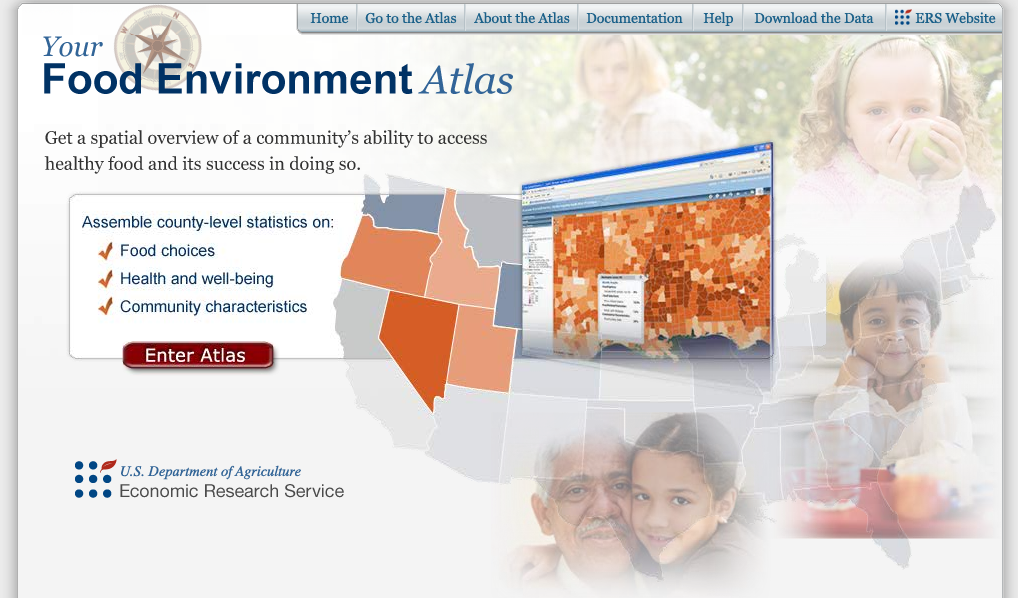
Image Credit: screen shot of http://www.ers.usda.gov/FoodAtlas/
Last week, First Lady Michelle Obama introduced Let's Move, a new government initiative aimed at ending the childhood obesity epidemic within one generation. After attending the signing of a Presidential memorandum forming a special task force on childhood obesity, Mrs. Obama officially launched the Let's Move campaign at a press conference with reporters, cabinet-level secretaries and local school children. During the press conference, the First Lady introduced the Food Environment Atlas, a new website for locating "food deserts" and otherwise visualizing the availability of healthy food to households around the country. More about the Food Atlas after the jump.
I spent some time looking through the variety of maps available on the Food Atlas, and noticed a number of alarming-even-if-expected geographical correlations. I found the "Persistent Child Poverty Rate" map one of the most interesting baselines to use for mapping food insecurity in the country. (As a side note, my home state of Texas has the highest rate of childhood food insecurity in the country: more than one in five Texas children lack access to enough food to meet their basic needs at all times.)
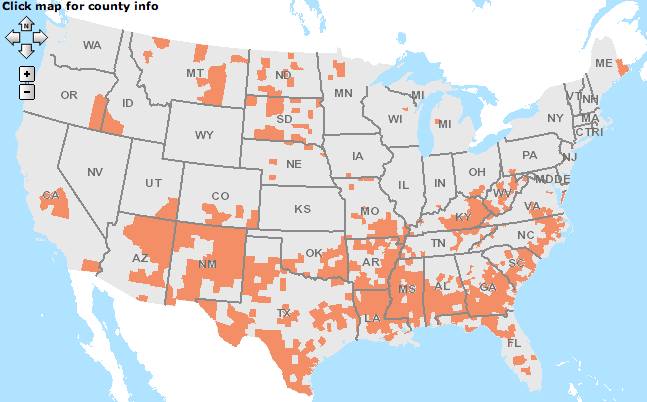
Image Credit: screen shot from http://www.ers.usda.gov/FoodAtlas/
The rate of persistent childhood poverty in this country translates geographically into limited access to grocery stores. The map below shows the percent of households with no car who live more than one mile from the nearest grocery store.
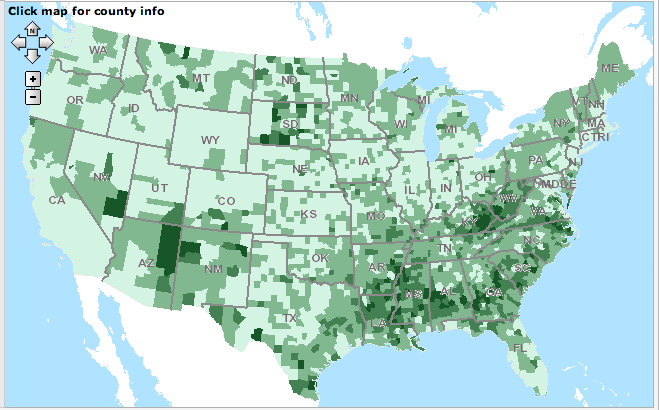
Image Credit: screen shot from http://www.ers.usda.gov/FoodAtlas/
Lack of access to healthy foods including fresh fruits and vegetables translates in turn into a variety of chronic health problems. The two maps below show the rates of adult obesity (top) and adult diabetes (bottom).
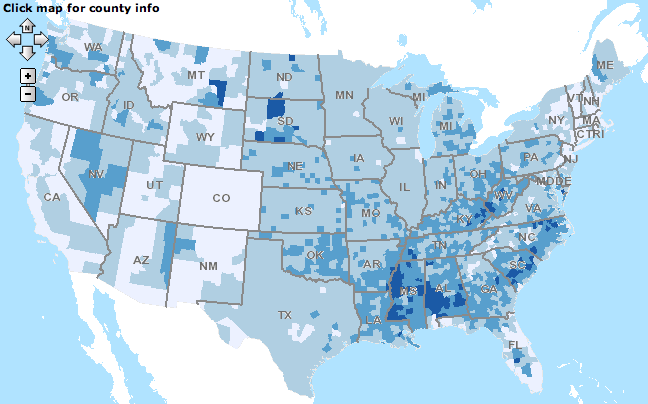
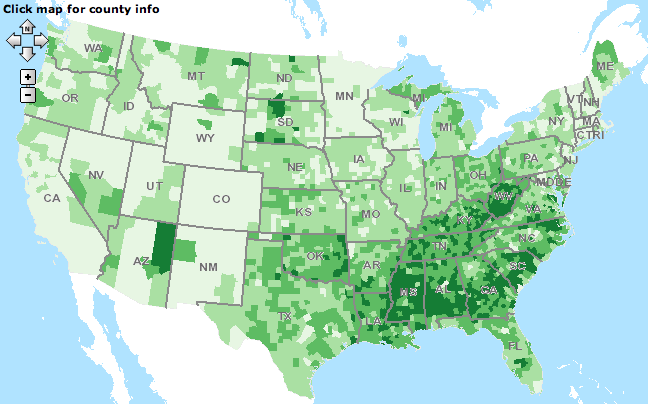
Image Credits: screen shots from http://www.ers.usda.gov/FoodAtlas/
Taken together, these images present a rather damning indictment against the richest country in the history of the world. The truth is that many Americans go hungry every day, and even those whose stomachs are filled frequently suffer from malnutrition, defined by WHY as "A failure to achieve proper nutrient requirements, which can impair
physical and/or mental health. It may result from consuming too little
food or a shortage or imbalance of key nutrients (e.g., micronutrient
deficiencies or excess consumption of refined sugar and fat)." Federal farm subsidies on crops like corn and soybeans make energy-dense, corn- and soy-heavy processed foods cheaper per calorie than fruits, vegetables and whole grains. As a result, low-income and food-insecure households often find the cost increase of eating healthy meals challenging if not prohibitive. The First Lady's campaign against childhood obesity as well as the federal government's attempts to reform our healthcare system and bring disease-related expenditures and long-term health costs under control cannot afford to ignore these links between income, food availability and chronic illness.
An article from last month's New York Times tells us that one in five Americans had trouble buying food last year. A separate article from last week's Times carried some mixed good news: individual states are doing a better job of enrolling eligible citizens in SNAP, the federal "food stamp" program. According to the same article, the social stigma attached to food stamps is also easing up do in part to the sheer number of enrollees. SNAP currently feeds one in eight Americans and almost one quarter of the nation's children. The recession has also made accepting federal assistance less objectionable; this map, also from the Times, shows the increase in SNAP enrollment since 2007. The darkest shade represents an increase of over sixty percent.
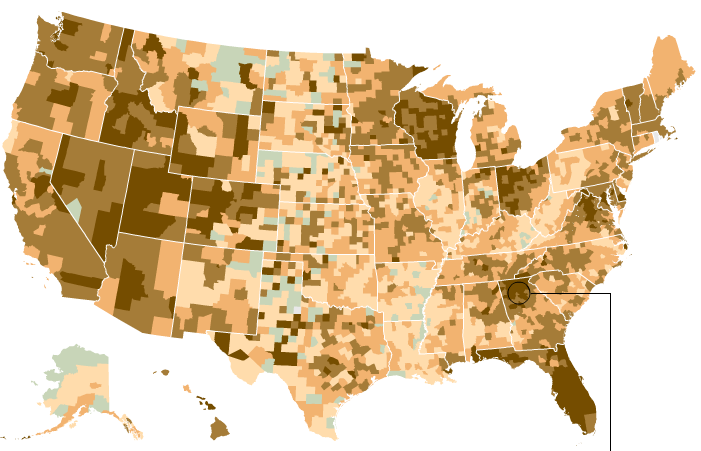
Image Credit: screen shot from The New York Times
There are other signs of progress around the country. Along with her Let's Move program and the White House kitchen garden, Michelle Obama has been vocal in support of farmers markets and other ways of bringing fresh, healthy fruits and vegetables into underserved neighborhoods. She was active in advocating and supporting a new farmers market that recently opened just blocks from the White House. On opening day, she told reporters, “I’ve learned that when my family eats fresh food, healthy food, that
it really affects how we feel, how we get through the day, and that’s
whether we’re trying to get through math homework or whether there’s a
Cabinet meeting or whether we’re just walking the dog.’’
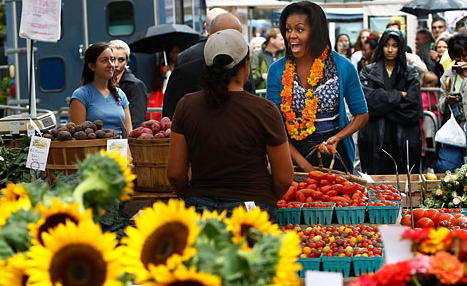
Image Credit: Win McNamee/Getty Images
Another hopeful sign comes from efforts to make SNAP easier to use at farmers markets like the one above and from local government efforts to move supermarkets and their produce sections into underserved neighborhoods. There are also a number of community and non-profit organizations working to combat hunger and malnutrition in American cities. There is hope that efforts like the First Lady's combined with legistlative action and community involvement, we won't become a country with two distinct food systems respectively feeding and starving the rich and poor.
Recent comments
2 years 29 weeks ago
2 years 44 weeks ago
2 years 44 weeks ago
2 years 50 weeks ago
3 years 4 weeks ago
3 years 4 weeks ago
3 years 4 weeks ago
3 years 6 weeks ago
3 years 6 weeks ago
3 years 6 weeks ago